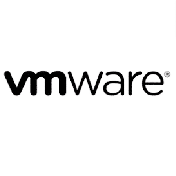Inhalt des Trainings
This course teaches you the skills that are needed to administer IBM WebSphere Application Server V9.
This release of IBM WebSphere Application Server provides enhanced support for standards (notably Java 7 EE), emerging technology, and a choice of development frameworks.
In this course, you learn how to configure and maintain IBM WebSphere Application Server V9 in a single-server environment. You learn how to deploy enterprise Java applications in a single computer configuration. In addition, you learn how to work with features of WebSphere Application Server V9, such as the wsadmin scripting interface, security, and performance monitoring.
Hands-on exercises throughout the course give you practical experience with the skills you develop in the lectures.
After completing this course, you should be able to:
- Relate WebSphere Application Server to the WebSphere family of products
- Describe the features and standards in WebSphere Application Server V9
- Describe the use of WebSphere Application Server in cloud, hybrid cloud, and on-premises environments
- Describe the architectural concepts that are related to WebSphere Application Server
- Assemble and install server-side Java enterprise applications
- Use WebSphere administrative tools to configure and manage enterprise applications
- Use wsadmin scripting
- Configure WebSphere Application Server security
- View performance information about server and application components
- Troubleshoot problems by using problem determination tools and log files

Zielgruppen
This course is designed for administrators who configure and manage web-based applications on WebSphere Application Server. Web administrators, application developers and deployers, security specialists, and application architects can also benefit from this course.
Vorkenntnisse
Basic operational skills for the Linux operating system
- Administrative skills for a web server, such as IBM HTTP Server or Apache
- Basic understanding of cloud concepts, private, public, and hybrid clouds, and traditional on-premises environments.
Microsoft
Microsoft Office
ITIL
Red Hat
Cisco
 VMware
VMwareCitrix
Unix Linux
Amazon AWS
 Oracle
OracleAutoCAD
IBM
Hewlett Packard Enterprise (HPE)
Google
Salesforce
AI – Artificial Intelligence
Automatisierung
Cloud Computing
Grafik
IT-Management
Development
Security
Netzwerk
Data Science
Soft Skills
Video Based Trainings
Nachhaltigkeit
